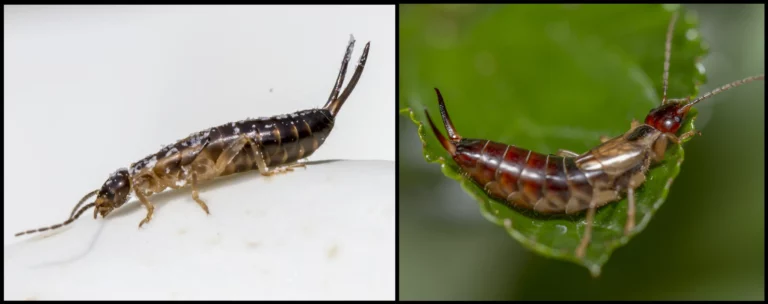Table of Contents
ToggleKey Points
- Understanding Earwigs: Earwigs, or pincher bugs, are nocturnal insects attracted to moist, cool environments.
- Signs of Infestation: Physical sightings, plant damage, and foul odors indicate their presence.
- Elimination Methods: Reduce moisture, remove hiding places, use traps, apply natural remedies, or consider chemical treatments.
- Prevention: Regular maintenance, landscape adjustments, and monitoring prevent future infestations.
Earwigs, commonly known as pincher bugs due to their pincer-like appendages, are small insects that can become unwelcome guests in your home and garden. While they are not harmful to humans, their presence can be unsettling, and they may cause damage to plants. This comprehensive guide will provide you with effective strategies to eliminate earwigs and prevent future infestations.
Understanding Earwigs
Earwigs belong to the order Dermaptera and are nocturnal creatures that prefer damp, cool environments. They feed on a variety of organic matter, including plants, fruits, and other insects. Recognizable by their elongated bodies and forceps-like pincers, earwigs can be a nuisance when they invade homes seeking shelter and food.
Why Are Earwigs Attracted to Your Home?
- Moisture: Earwigs thrive in moist conditions, often found in bathrooms, basements, and kitchens.
- Shelter: They seek refuge in cracks, crevices, and other secluded areas during the day.
- Food Sources: Gardens with abundant plant life provide ample food.
Signs of an Earwig Infestation
- Physical Sightings: Finding live earwigs indoors, especially in damp areas.
- Plant Damage: Irregular holes in leaves, petals, and fruits in your garden.
- Foul Odor: Some species emit a foul-smelling liquid as a defense mechanism.
Effective Methods to Eliminate Earwigs
1. Reduce Moisture Levels
Earwigs are drawn to damp environments. By reducing moisture, you make your home less inviting.
- Fix Leaks: Repair leaking faucets, pipes, and air conditioning units promptly.
- Improve Ventilation: Use dehumidifiers and fans in damp areas like basements and bathrooms.
- Proper Drainage: Ensure gutters and downspouts direct water away from your home’s foundation.
2. Eliminate Hiding Places
Removing potential shelters can discourage earwigs from settling in.
- Clear Debris: Remove piles of leaves, mulch, and organic materials near your home.
- Trim Vegetation: Keep grass, shrubs, and tree branches trimmed and away from exterior walls.
- Seal Entry Points: Use caulk or weather stripping to seal cracks around doors, windows, and the foundation.
3. Use Traps
Trapping can effectively reduce their population without chemicals.
- Rolled Newspaper Trap: Dampen and roll up newspapers, placing them where earwigs are active. Dispose of them in the morning.
- Oil and Soy Sauce Trap: Fill a shallow container with equal parts soy sauce and vegetable oil. Place it near infestations; earwigs are attracted and will drown.
4. Apply Natural Remedies
Safe for homes with pets and children.
- Diatomaceous Earth: Sprinkle food-grade diatomaceous earth around entry points and affected areas. It dehydrates and kills earwigs on contact.
- Essential Oils: Create a spray with water and oils like cedar, lavender, or eucalyptus. Apply around baseboards and entryways to repel earwigs.
5. Consider Chemical Treatments
For severe infestations, chemical options may be necessary.
- Insecticidal Sprays: Use pesticides labeled for earwig control, following the manufacturer’s instructions.
- Perimeter Treatments: Apply residual insecticides around your home’s foundation to prevent entry.
Note: Always read and follow label directions when using pesticides. Consider consulting a professional for safe application.
Preventing Future Infestations
Regular Maintenance
- Cleanliness: Keep your home clean and free of food scraps that may attract earwigs.
- Moisture Control: Regularly check for and repair any water leaks.
- Ventilation: Ensure good airflow in damp areas.
Landscape Adjustments
- Mulch Alternatives: Use gravel or stone instead of wood mulch near the foundation.
- Proper Plant Spacing: Avoid dense vegetation near your home that can harbor moisture and earwigs.
Monitor and Inspect
- Regular Checks: Especially during wet seasons, inspect your home and garden for signs of earwigs.
- Early Intervention: Addressing small issues can prevent larger infestations.
Dispelling Myths About Earwigs
Despite folklore, earwigs do not crawl into human ears to lay eggs or burrow into the brain. They are harmless to humans and prefer to avoid contact.
Quick Reference Table: Earwig Elimination Methods
| Method | Action Steps | Benefits |
|---|---|---|
| Reduce Moisture | Fix leaks, use dehumidifiers, improve drainage | Less attractive environment |
| Eliminate Hiding Places | Clear debris, trim vegetation, seal entry points | Removes shelter and access |
| Use Traps | Rolled newspapers, oil and soy sauce traps | Chemical-free population control |
| Apply Natural Remedies | Diatomaceous earth, essential oil sprays | Safe for pets and children |
| Chemical Treatments | Insecticidal sprays, perimeter treatments | Effective for severe infestations |
| Preventive Measures | Regular maintenance, landscape adjustments, monitoring | Long-term control |
Conclusion
By understanding earwig behavior and implementing these strategies, you can effectively eliminate them from your home and garden. Consistent maintenance and preventative measures are essential to keep your spaces earwig-free. Remember, a combination of methods often yields the best results, so don’t hesitate to use multiple strategies simultaneously.

